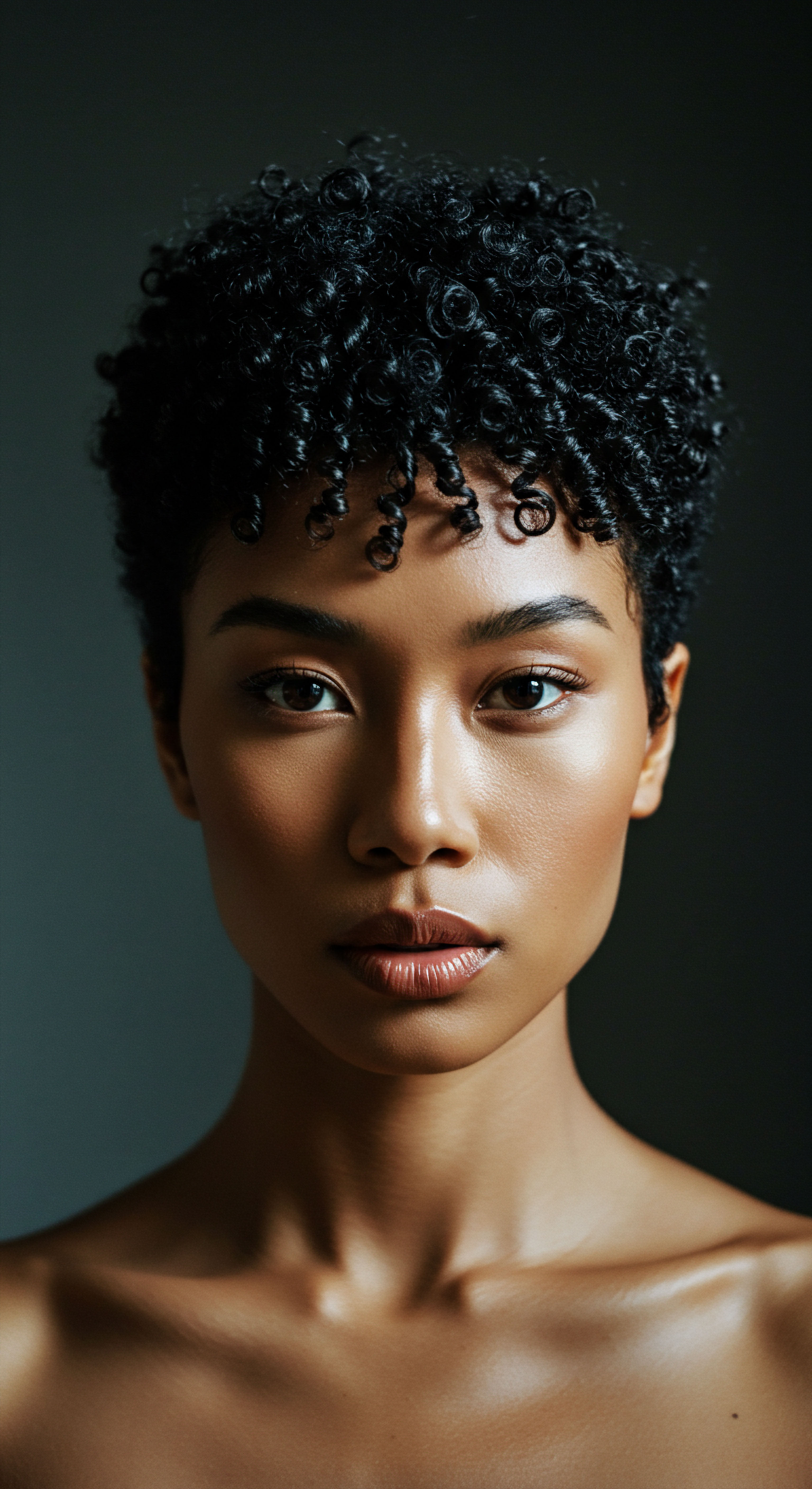
Roots
The whisper of the wind, the gentle touch of mist, the heavy cloak of a summer downpour—each carries with it the silent language of humidity, a language our textured strands understand intimately. To truly comprehend how this atmospheric moisture dances with our hair, we must first journey inward, past the visible curl and coil, to the very heart of each strand. Here, within the microscopic architecture, lies the story of porosity, a tale of gates and guardians, always responding to the world around us. This fundamental understanding unlocks a deeper appreciation for the resilience and responsiveness of our hair, inviting us to move beyond superficial fixes and into a realm of genuine care.

The Hair Strand’s Inner World
Each individual hair strand, seemingly simple, is a marvel of biological engineering. At its core lies the Medulla, a soft, sometimes discontinuous central canal. Surrounding this is the Cortex, the primary bulk of the hair, composed of tightly packed keratin proteins that give hair its strength, elasticity, and pigment. The cortex holds the key to hair’s mechanical properties, dictating how much it can stretch and return to its original shape.
Wrapping these inner layers, like protective scales, is the Cuticle. These overlapping cells, akin to shingles on a roof, are the hair’s primary defense against environmental stressors and the main determinant of its porosity. Their condition dictates the ease with which moisture enters or leaves the hair shaft.
The cuticle, a delicate shield of overlapping cells, acts as hair’s primary gateway for moisture.

Porosity A Hair’s Breath
Hair porosity describes the hair’s ability to absorb and retain moisture. It is a spectrum, not a rigid classification, yet understanding where one’s hair generally falls along this continuum offers invaluable guidance for care. We speak of three general categories ❉ low, medium, and high porosity. Each possesses unique characteristics that influence how hair reacts to water, products, and, critically, the humidity in the air.
- Low Porosity ❉ Hair with low porosity possesses tightly closed cuticles that lie flat against the cortex. This structure makes it challenging for moisture to penetrate the hair shaft. Water often beads on the surface, and products may sit on the hair rather than absorbing. Once moisture does enter, however, it is retained well.
- Medium Porosity ❉ Often considered the ideal, medium porosity hair has cuticles that are neither too tightly closed nor too widely open. This allows for a balanced absorption and retention of moisture. Hair with medium porosity tends to respond well to styling and requires less maintenance.
- High Porosity ❉ Hair exhibiting high porosity has cuticles that are raised or compromised, creating gaps and openings along the hair shaft. This condition allows moisture to enter rapidly but also to escape with equal speed. Such hair may feel dry, appear frizzy, and be more prone to tangling and breakage.
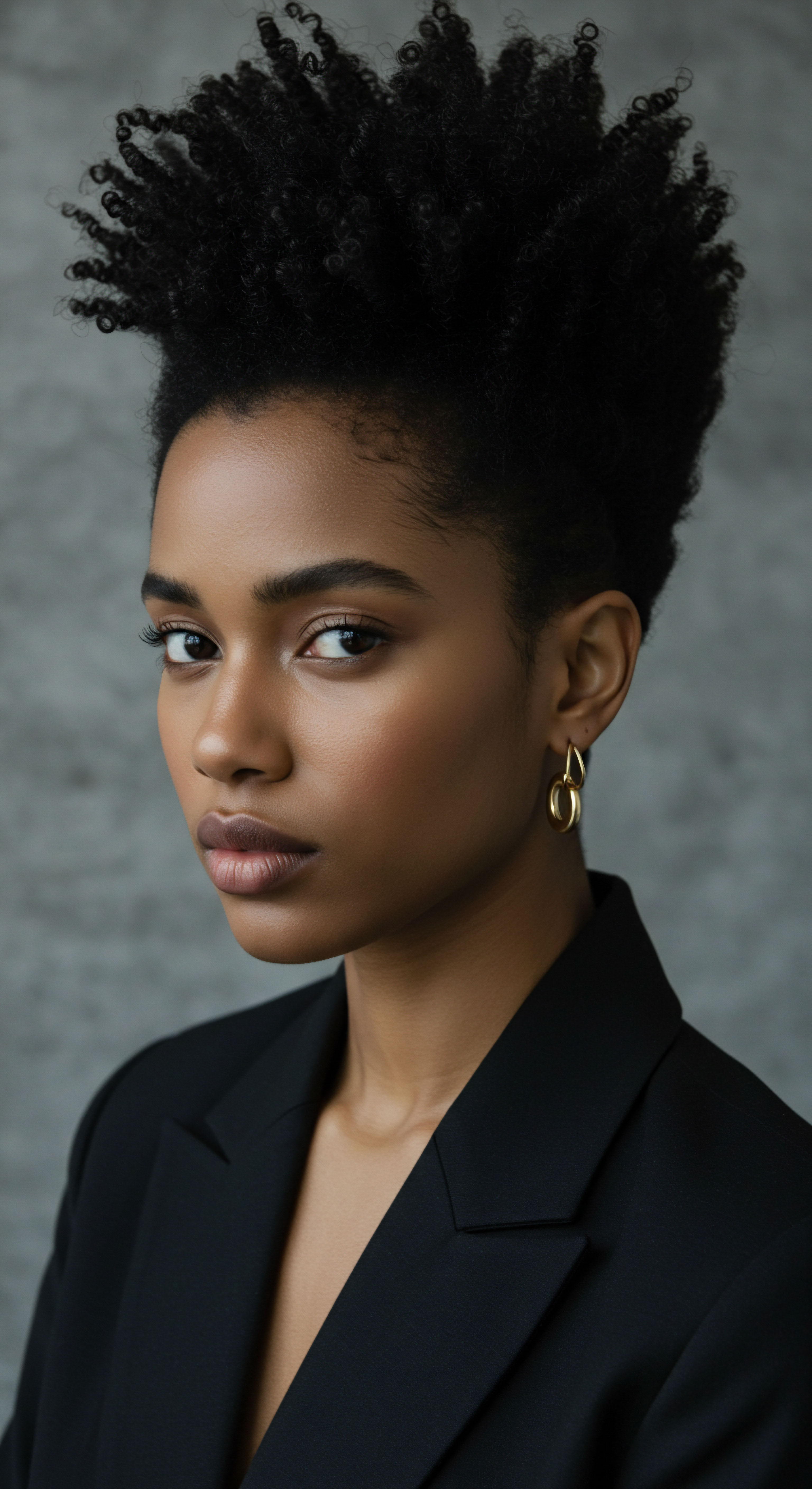
The Cuticle’s Dance With Moisture
The interaction between hair porosity and environmental humidity is a subtle, ongoing conversation. When the air is dry, hair, particularly that with high porosity, will readily release its internal moisture into the atmosphere, leading to dryness and brittleness. Conversely, in a humid environment, hair seeks equilibrium with its surroundings.
For highly porous strands, this means a rapid absorption of atmospheric water, often leading to swelling and the phenomenon we commonly identify as frizz. This hygroscopic behavior, the tendency of hair to absorb water from the air, is directly modulated by the state of the cuticle.
Research highlights the distinctive structural features of textured hair, particularly Afro-textured hair, which naturally influence its porosity. A study published in the International Journal of Trichology in 2015 revealed that Afro-textured hair often displays a greater number of open cuticles compared to other hair types. This inherent characteristic, combined with the natural helical twists and turns of curls and coils, means the cuticle layers can be more easily lifted or raised. This structural reality contributes to an increased likelihood of higher porosity within textured hair strands, affecting how they interact with ambient moisture.
Consider the subtle shifts in the hair fiber itself. Hair swells anisotropically when hydrated, meaning its diameter increases significantly while its length changes minimally. This swelling, a direct response to water absorption, is a key indicator of porosity.
The more porous the hair, the more readily it absorbs water, and the more pronounced this swelling can be. This dynamic response underscores the cuticle’s critical role in managing the hair’s internal moisture balance, a balance constantly challenged by fluctuating humidity levels.
| Porosity Type Low |
| Cuticle Condition Tightly closed, flat |
| Moisture Absorption Slow, difficult |
| Moisture Retention Excellent |
| Humidity Reaction Resists moisture, can feel dry |
| Porosity Type Medium |
| Cuticle Condition Slightly raised, balanced |
| Moisture Absorption Balanced, good |
| Moisture Retention Good |
| Humidity Reaction Adapts well, less frizz |
| Porosity Type High |
| Cuticle Condition Raised, compromised |
| Moisture Absorption Rapid, easy |
| Moisture Retention Poor |
| Humidity Reaction Absorbs quickly, frizzes, dries fast |
| Porosity Type Understanding these fundamental responses helps tailor care for optimal hair health. |

Ritual
Stepping beyond the quiet observation of hair’s foundational elements, we arrive at the realm of daily ritual—the conscious choices and tender applications that shape our hair’s journey through the world. Here, the wisdom of porosity transforms into practical guidance, allowing us to choreograph a dance with humidity rather than contend with its unpredictable rhythm. This section invites a mindful approach to hair care, where each step, from cleansing to conditioning to protective styling, becomes an intentional act of balance and nourishment, guided by the unique needs of our textured strands.

Nourishing Porous Strands What Does Hair Need?
For those with high porosity hair, the challenge lies in sealing the cuticle to retain moisture that is so easily gained and lost. This requires a multi-layered approach to product application. Leave-in conditioners, applied to damp hair, provide a foundational layer of hydration. Following this, oils, particularly those with larger molecular structures, act as occlusives, creating a protective barrier on the hair’s surface to minimize water evaporation.
Finally, creams offer additional conditioning and hold, further sealing the cuticle and providing a soft definition. This method helps to stabilize the hair’s moisture content, preventing the dramatic swelling that leads to frizz in humid conditions and the rapid drying in arid climates.
Conversely, hair with low porosity requires a different touch. The tightly bound cuticles resist penetration, making it essential to create an environment that encourages moisture absorption. Heat, in the form of a warm towel or a hair steamer, gently lifts the cuticle, allowing conditioners and treatments to sink more deeply into the hair shaft.
Lighter, more penetrating oils and humectant-rich products, used judiciously, can also assist in drawing moisture into the hair without causing excessive product build-up. The goal is to hydrate without overwhelming the strands, ensuring that moisture is truly absorbed rather than merely sitting on the surface.
Tailoring product application to hair porosity transforms hair care from a struggle into a symphony of moisture balance.
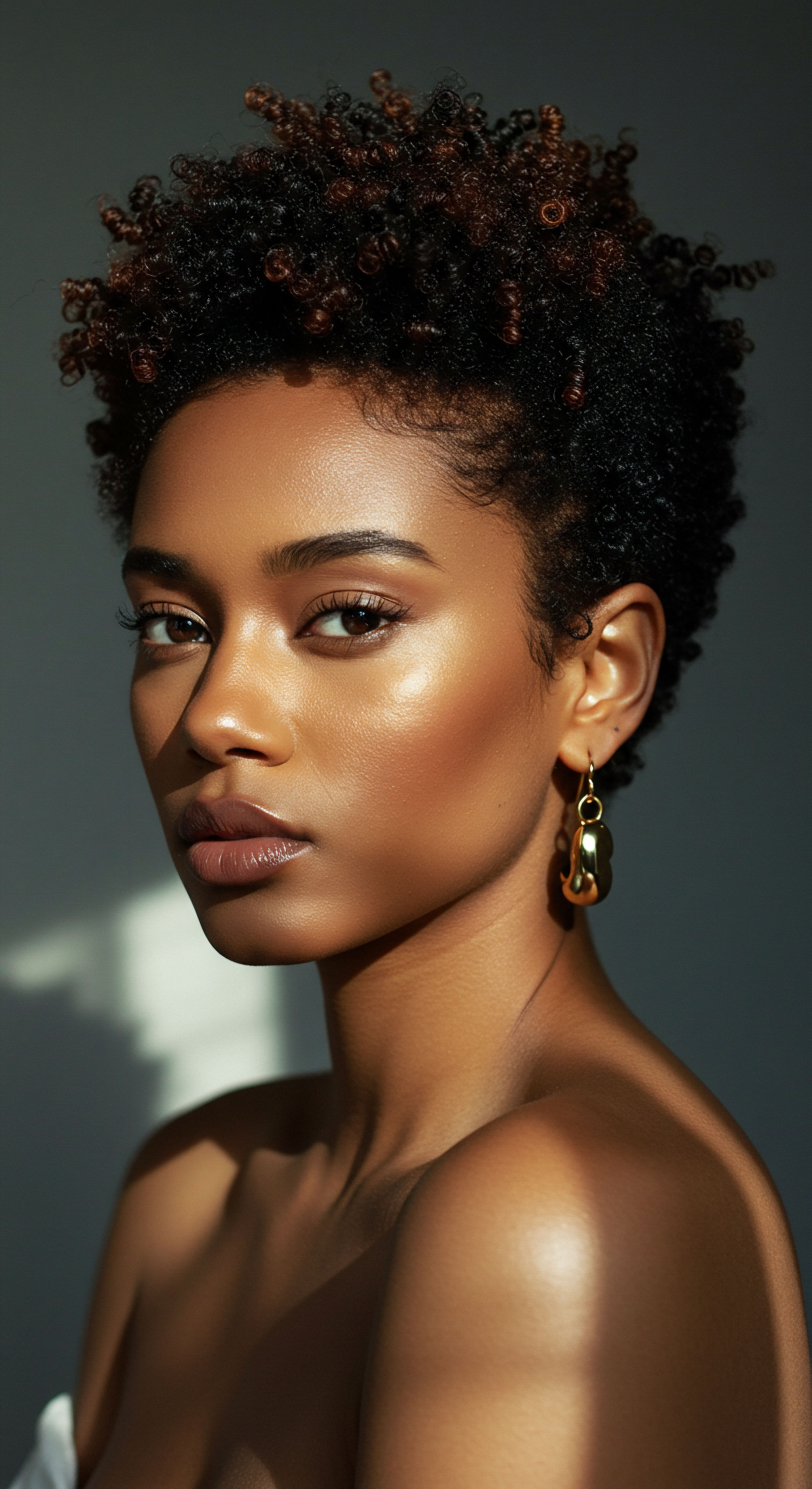
Ingredients As Allies How Do They Work?
The very essence of hair care ritual lies in the ingredients we choose. For managing humidity’s effects on porous hair, specific components become vital allies. Humectants, such as glycerin or hyaluronic acid, possess a remarkable ability to draw moisture from the environment. In dry climates, these can be incredibly beneficial, pulling ambient water into the hair.
However, in highly humid environments, humectants can draw in too much moisture, leading to excessive swelling and frizz, particularly for high porosity hair. Therefore, a careful consideration of local climate becomes paramount when selecting products with these ingredients.
Emollients, including natural oils and butters, provide a softening and smoothing effect by coating the hair shaft. They help to reduce friction between strands and impart a healthy sheen. For all porosity types, emollients contribute to cuticle smoothness, which can help manage how hair interacts with humidity. Proteins, such as hydrolyzed wheat protein or keratin, can temporarily fill gaps in compromised cuticles, particularly beneficial for high porosity hair.
They offer a temporary strengthening effect, reducing the hair’s susceptibility to breakage and excessive swelling. However, too much protein can lead to stiffness, especially in low porosity hair, which may already be prone to rigidity.
| Ingredient Type Humectants |
| Function Attracts moisture |
| High Porosity Guidance Use sparingly in high humidity; beneficial in dry climates. |
| Low Porosity Guidance Use cautiously to avoid product build-up; may benefit with heat. |
| Ingredient Type Emollients |
| Function Softens, smooths, seals |
| High Porosity Guidance Regular use for sealing and sheen. |
| Low Porosity Guidance Lighter oils to avoid weighing down. |
| Ingredient Type Proteins |
| Function Strengthens, fills gaps |
| High Porosity Guidance Beneficial for temporary cuticle repair. |
| Low Porosity Guidance Use sparingly to avoid stiffness. |
| Ingredient Type Strategic ingredient selection supports optimal hair health in varying climates. |

Protective Styling A Shield Against Elements
The practice of protective styling stands as a cornerstone in the care of textured hair, offering a tangible shield against the elements, including fluctuating humidity. Styles such as braids, twists, and buns encapsulate the hair, limiting its direct exposure to the atmosphere. This reduction in exposure minimizes the rapid absorption and desorption of moisture that can lead to hygral fatigue—the repeated swelling and shrinking of the hair shaft that weakens its structure over time.
For high porosity hair, protective styles help to maintain a more consistent moisture level, reducing frizz and preserving definition. For low porosity hair, while the primary concern is absorption, protective styles can still aid in maintaining a hydrated state once moisture has been effectively introduced.
Nighttime rituals also play a quiet yet significant role in managing hair’s relationship with humidity. Wrapping hair in a silk or satin scarf or sleeping on a silk pillowcase creates a gentle, low-friction environment. These materials do not absorb moisture from the hair as cotton does, thereby preserving the hair’s hydration throughout the night. This simple act contributes to smoother cuticles and less frizz upon waking, setting the stage for a more harmonious interaction with the day’s humidity.

Relay
As we venture deeper into the intricate relationship between hair porosity and humidity, we find ourselves in a space where science intertwines with lived experience, and personal care extends into broader cultural and environmental dialogues. This section is an invitation to consider the deeper currents that influence our hair’s response, moving beyond simple cause and effect to a more holistic, interconnected understanding. We will explore the subtle yet profound impact of environmental conditions, delve into the sometimes-unseen psychological echoes of hair’s behavior, and seek insights from research that challenges conventional wisdom.

The Hair’s Microclimate How Does It React?
Hair, a remarkably responsive biomaterial, constantly exchanges moisture with its surroundings. This exchange, a dynamic process, is directly influenced by the hair’s porosity and the ambient relative humidity. Consider the phenomenon of Hygroscopic Expansion, where hair fibers swell as they absorb water from the air.
For textured hair, with its inherent structural variations—such as elliptical cross-sections and points of curvature where cuticles may naturally lift—this expansion can be more pronounced and less uniform. This differential swelling across the fiber, or even within a single strand, contributes significantly to the visual effect of frizz, as individual hairs push against each other in their quest for moisture equilibrium.
Research on the kinetics of moisture sorption by hair reveals that the cuticle plays an increasingly significant role in moisture management at higher values of relative humidity. This means that as the air becomes heavier with water vapor, the condition of the cuticle becomes even more critical in determining how the hair behaves. For high porosity hair, where cuticles are already raised, the rapid influx of water can lead to over-swelling, causing the hair to lose its definition and become unruly. Conversely, low porosity hair, while initially resistant to moisture, can still experience issues if exposed to prolonged high humidity, potentially leading to a heavy, damp feeling as moisture slowly penetrates.
Hair’s dance with humidity is a complex interplay of cuticle condition and atmospheric moisture.
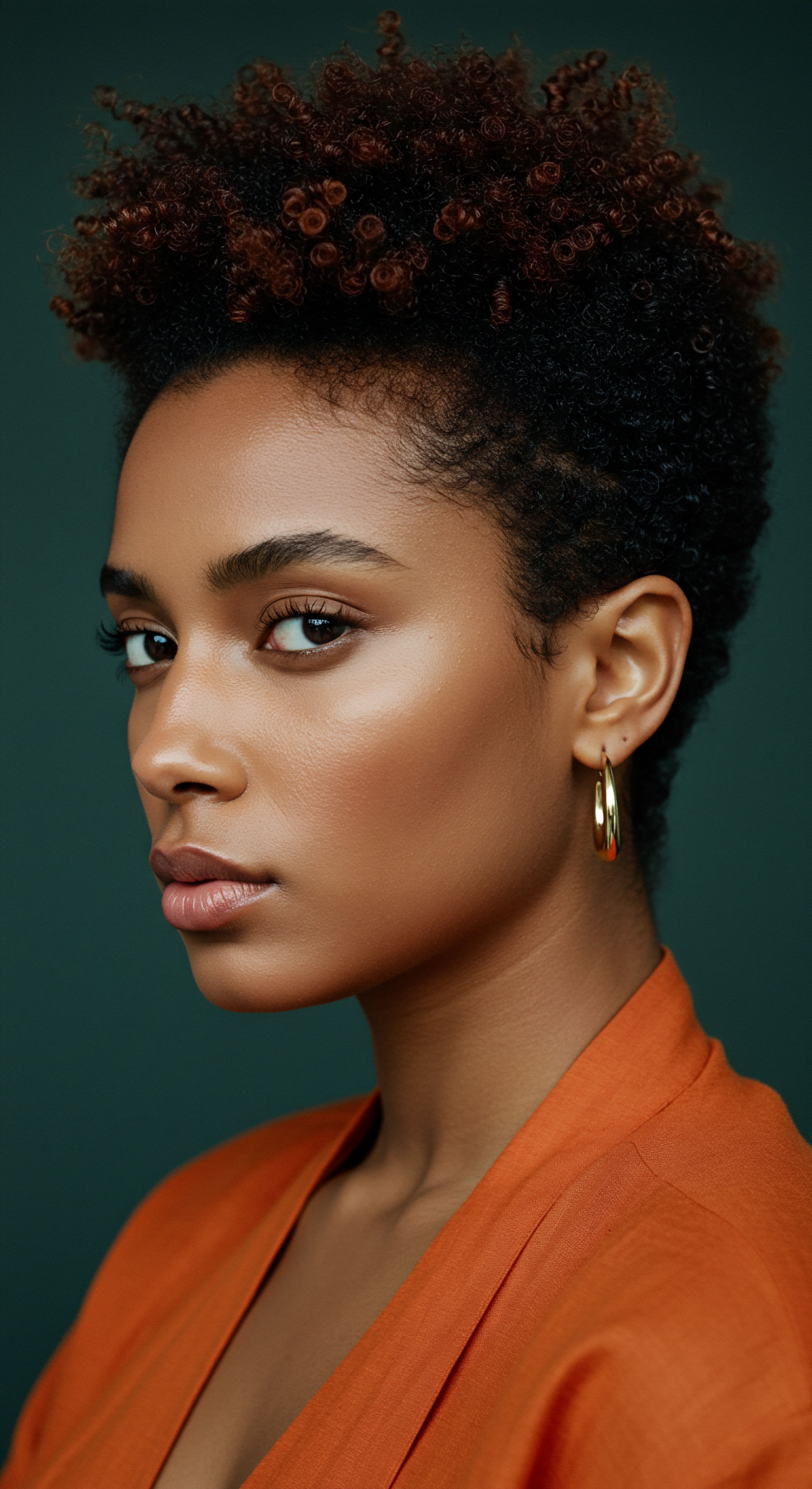
Perceived Moisture Versus Reality What Does Research Reveal?
An intriguing aspect of hair care, particularly concerning textured hair, lies in the disconnect between what consumers perceive as “moisturized” and the actual scientific measurement of hair’s water content. While the feeling of soft, pliable hair is often associated with adequate hydration, scientific studies have sometimes shown that perceived hair moisturization does not always correlate directly with actual hair moisture content. This observation challenges us to consider the multifaceted nature of hair health. It suggests that the tactile properties and visual appearance of hair—its smoothness, elasticity, and sheen—are influenced by a complex interplay of factors beyond just water content.
These include the presence of product on the hair’s surface, the penetration of oils, and the localization of moisture within the hair structure. This insight invites a more nuanced approach to product formulation and consumer education, acknowledging that a product might enhance the ‘feeling’ of moisture through mechanisms other than simply increasing water absorption.

The Emotional Landscape of Hair What Is Its Impact?
Beyond the biophysical reactions, the interaction between hair and humidity carries a profound psychological weight, particularly for individuals with textured hair. The daily struggle with frizz, limpness, or excessive volume in humid conditions can transcend mere cosmetic concern, touching upon self-perception and emotional well-being. A community-based study conducted in Southwest Nigeria revealed that women experienced significant clinical and psychological distress related to their hair grooming practices. The study indicated that common psychological effects included feelings of uneasiness, frustration, poor body image, and even anger, especially for those experiencing hair breakage and loss.
While this study broadly examines hair conditions, the daily battle against humidity-induced frizz, a common experience for many with textured hair, undoubtedly contributes to these feelings. The inability to control one’s hair’s response to the environment can chip away at confidence, impacting social interactions and personal comfort. This highlights the deep connection between hair’s physical state and an individual’s emotional landscape, urging us to approach hair care with empathy and a recognition of its broader human significance.
| Porosity Level Low Porosity |
| Structural Impact of Humidity Minimal initial swelling, slow moisture absorption. |
| Common Hair Behavior Product build-up, takes long to dry, can feel heavy. |
| Management Principle Gentle heat to aid penetration, lighter products. |
| Porosity Level Medium Porosity |
| Structural Impact of Humidity Balanced swelling, adapts well. |
| Common Hair Behavior Generally manageable, holds styles well. |
| Management Principle Consistent care, less extreme adjustments. |
| Porosity Level High Porosity |
| Structural Impact of Humidity Rapid and significant swelling, cuticle lifting. |
| Common Hair Behavior Frizz, dryness, tangling, loss of definition. |
| Management Principle Sealing methods, protein treatments, protective styles. |
| Porosity Level Understanding these effects guides effective hair care strategies. |

Cultural Dimensions of Hair and Humidity
The relationship between hair and humidity is not solely a scientific or personal one; it is also steeped in cultural context. Across various Black and mixed-race communities, hair has long served as a powerful symbol of identity, heritage, and expression. The desire for hair that is manageable, defined, and resistant to frizz in humid climates has shaped traditional hair care practices and influenced beauty standards. From ancient African styling techniques designed to protect hair from environmental elements to modern protective styles, the ingenuity of textured hair care has often been a direct response to climatic realities.
The cultural significance of hair means that its interaction with humidity is not merely a matter of molecular science, but also a lived experience intertwined with self-acceptance, communal identity, and the ongoing dialogue about beauty. The very concept of “good hair” has historically been tied to its manageability and perceived resistance to environmental factors, underscoring the deep societal pressures that can arise from hair’s natural response to humidity.

Reflection
Our journey through the delicate interplay of hair porosity and humidity reveals a narrative far richer than mere scientific principles. It is a story of adaptation, of resilience, and of a profound connection between our strands and the world they inhabit. We have explored the intricate dance of cuticles, the nuanced wisdom of tailored rituals, and the deeper cultural and emotional echoes of hair’s response to atmospheric moisture.
Each discovery reinforces the idea that true hair care is not a battle against nature, but a thoughtful partnership with it. By understanding the unique language of our hair, we cultivate not only its physical well-being but also a deeper appreciation for its inherent beauty, allowing our textured strands to flourish, regardless of the climate’s changing mood.
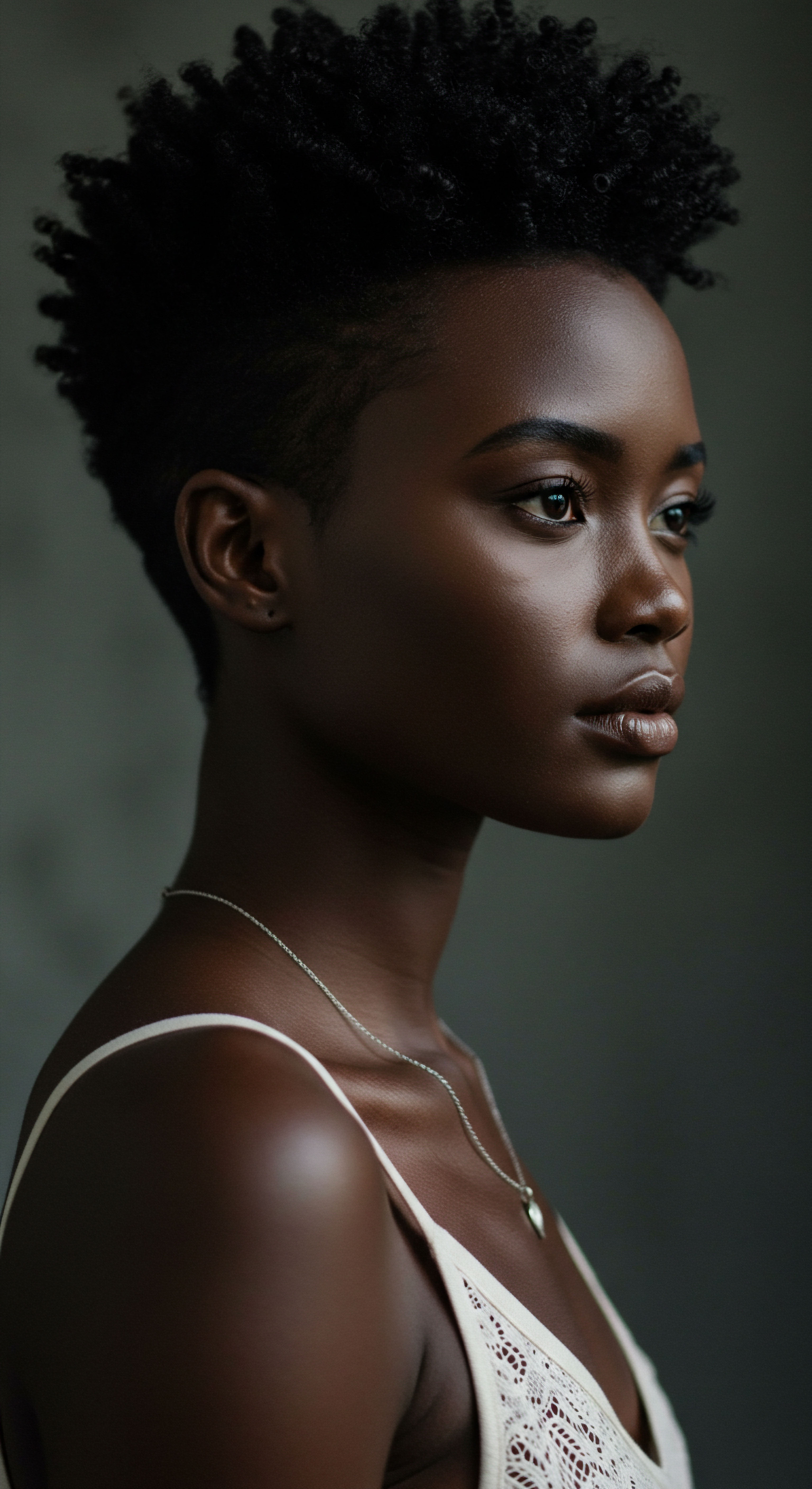
References
- Gwyn, A. (2023). Understanding Afro Hair. International Journal of Trichology, 7(3), 112-117.
- NYSCC. (2020). An Overview on Hair Porosity. NYSCC.
- Breakspear, S. (2022). Cuticle – Designed by Nature for the Sake of the Hair. ResearchGate.
- Giacomoni, N. (2025). Porosity and Resistance of Textured Hair ❉ Assessing Chemical and Physical Damage Under Consumer-Relevant Conditions. MDPI.
- WebMD. (2024). What to Know About High Porosity Hair. WebMD.
- Bhushan, B. (2010). Biomaterials ❉ Structure and Properties. Springer.
- Syed, A. (2002). Correlating porosity to tensile strength. Cosmetics & Toiletries, 117(11), 57-62.
- Robbins, C. R. (2012). Chemical and Physical Behavior of Human Hair (5th ed.). Springer.
- Feughelman, M. (1997). Mechanical Properties of Keratin Fibers. Academic Press.
- Popescu, C. & Höcker, H. (2009). Hair ❉ Its structure and response to cosmetic preparations. Clinics in Dermatology, 27(4), 405-412.
- Davis-Sivasothy, A. (2011). The Science of Black Hair. Saja Publishing Company.
- Patterson, A. M. & Hilliard, L. J. (2023). A Community-Based Study of Hair Care Practices, Scalp Disorders and Psychological Effects on Women in a Suburban Town in Southwest Nigeria. ResearchGate.
- Giacomoni, N. (2024). The Genomic Variation in Textured Hair ❉ Implications in Developing a Holistic Hair Care Routine. Preprints.org.
- Hexis Lab. (2024). Genomic Variation in Textured Hair ❉ Implications for Holistic Hair Care. Hexis Lab.
- Dias, M. F. R. G. (2015). Hair cosmetics ❉ An overview. International Journal of Trichology, 7(1), 2-15.